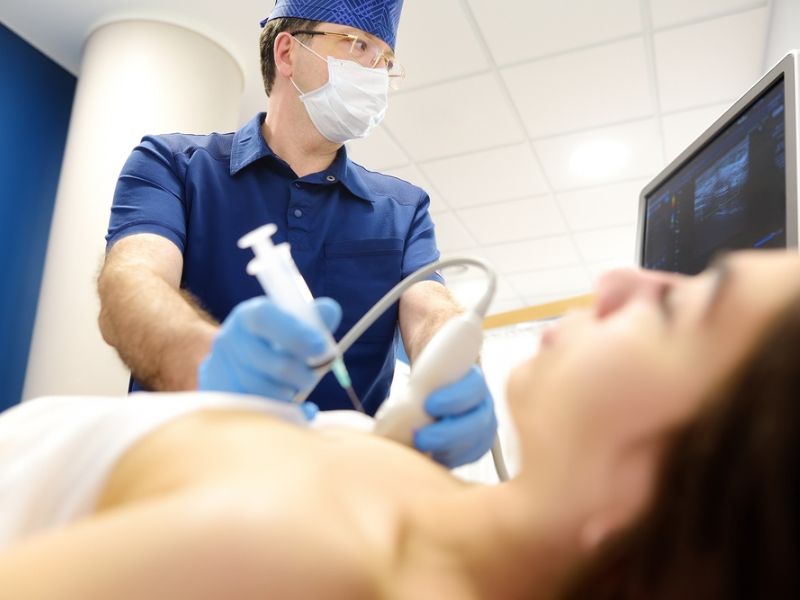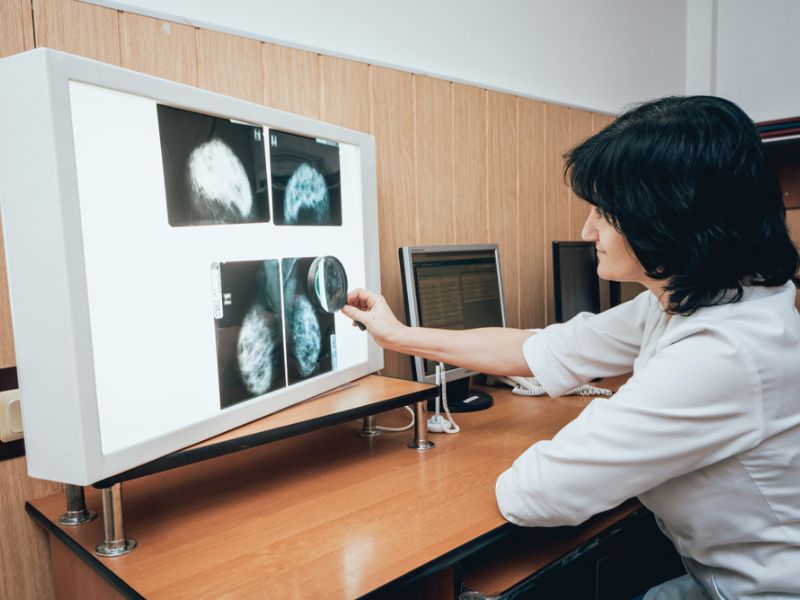Each year, millions of women get breast biopsies, yet the specifics of the surgery are rarely freely shared.
Breast biopsies aid in the diagnosis of various breast lesions and lumps. According to prior studies, most patients perceive their breast biopsy experience as mildly upsetting. It makes sense because you are awaiting information that could significantly alter the trajectory of your life.

Image Credit: Shutterstock/Maria Sbytova
Biopsies Are Important To Detect Cancer
To examine more closely, imaging (ultrasound or mammography) is likely to be performed if a patient experiences a breast symptom, such as a lump or persistent pain. Imaging tests are used to detect abnormal growths or lesions discovered on the body’s surface, which are then examined under a microscope to determine whether or not they are cancerous. Your doctor could suggest you receive a breast biopsy if the imaging tests show something unusual to get a more accurate diagnosis. A tiny needle is put into the breast during a breast biopsy to acquire a tissue sample.
There Are Three Types Of Breast Biopsies.
Stereotactic biopsy – A stereotactic biopsy involves determining the tumor’s location using mammography. The compression and numbing of the breast can be rather unpleasant.
Ultrasound-guided biopsies – additionally, some biopsies are guided by ultrasound, which is more frequently carried out on women with dense breasts.
MRI-guided biopsies – are the third kind. Patients with a lesion that can only be seen on an MRI are advised to do this.

Image Credit: Shutterstock/Roman Zaiets
Dealing with Breast Biopsy Anxiety
It’s normal to experience some nervousness before a breast biopsy. When looking for a medical diagnosis, there are plenty of unknowns on which anxiety thrives and a perfectly acceptable reaction to an unfamiliar process.
Research says people who practice mindfulness, or being in the present moment, can unwind before receiving a breast biopsy. Listening to music throughout the process might also make you feel more at ease if allowed.